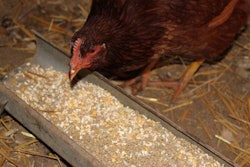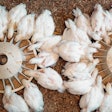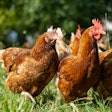Provisional forecasts from South Africa’s Crop Estimates Committee (CEC) make grim reading for summer field crops in 2016. Severe drought has drastically reduced the areas planted with commercial corn, soybeans, groundnuts, sorghum and dry beans. Only for sunflowers has the planted area increased from the previous season, and that is only by about 7 percent.
In terms of output, all crops are forecast lower than last year. The preliminary size of the commercial corn crop is 7,438 million metric tons (mmt), which is 25.2 percent less than the previous season, with an expected yield of 3.73 metric tons (mt) per hectare. For white corn, the forecast is down 30.5 percent from last year at 3,267 mmt, based on an average yield of 3.16 mt per hectare, and for yellow corn, a 20.4 percent reduction is expected to 4,171 mmt, assuming a yield of 4.33 mt per hectare.
The preliminary production forecasts are: sunflower seed, 622,000 mt (-5.9 percent); soybeans, 768,560 mt (-27.5 percent); groundnuts, 29,600 mt (-47.8 percent); sorghum, 119,400 mt (-2.5 percent) and dry beans, 35,150 mt (-52.1 percent).
An El Nino weather pattern is forecast to keep much of the maize belt hot and dry until the end of the growing season in April, according to The Africa Report.
Record-high temperatures were recorded in many regions last month and rainfall has been the lowest in more than 100 years.
The South African government has estimated that up to 6 mmt of corn may need to be imported this year, reports the same source. That represents more than half of the country's needs. The situation is especially worrying for white corn, a staple food not widely grown outside of the region. Yellow corn is used for livestock and can be sourced elsewhere.
The country’s central bank has already expressed concern about the drought, which is being cited as the main cause of a rise in inflation.
Drought impacts pig meat sector
The drought is having a disastrous impact on pork producers and will lead to inevitable increases in the price of pork products, according to the South African Pork Producers’ Organisation (SAPPO). Even if good rains fall now, it says, it will be too late for many farmers to recover from the knock they are taking.
“Many pork producers are in difficulty and are facing financial hardships,” said Simon Streicher, CEO of SAPPO. “Producing the same quality and quantity of pork products in these conditions is a challenge and output will decrease. This will obviously have a domino effect on supply and demand and increases in pork prices are unavoidable. There is no alternative, they have to increase.”
On top of the drought, pork producers are feeling the pressure from the weakening rand, unstable electricity supply, and increased labor costs.


















